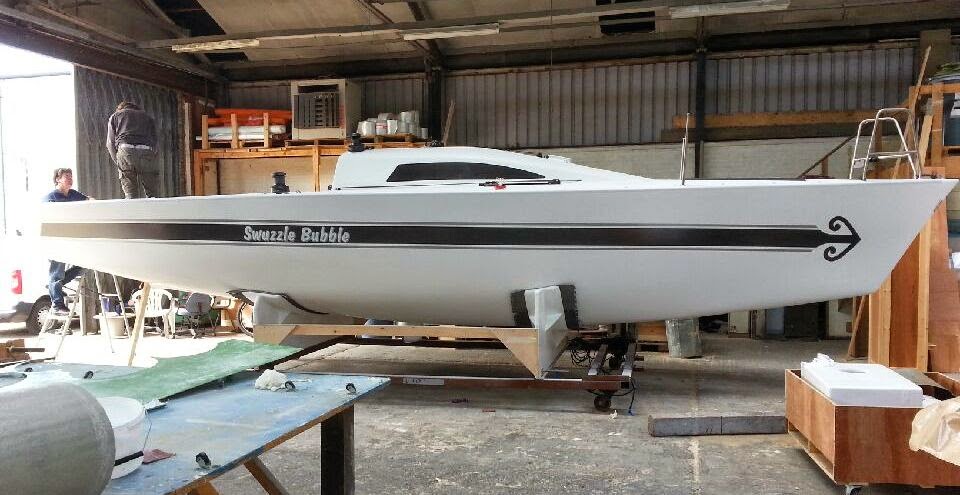 After seeing the transformation of Swuzzlebubble in the previous post, I asked designer Mark Mills for some insights into the conversion of ex-IOR yachts into a race-winning IRC configuration, and he has provided an interesting overview of this process below. Mills was involved in the optimisation of Peter Morton's Farr-designed Half Tonner Swuzzlebubble, and this has followed a number of other successful conversion projects. The keel design used for Swuzzlebubble was also of interest, and so Mills has also explained the theory behind the concave section used in his Quarter and Half Ton projects. Mills' comments might also be helpful for the owners of larger One Tonners who are contemplating conversions to IOR for the 2015 One Ton regatta.
After seeing the transformation of Swuzzlebubble in the previous post, I asked designer Mark Mills for some insights into the conversion of ex-IOR yachts into a race-winning IRC configuration, and he has provided an interesting overview of this process below. Mills was involved in the optimisation of Peter Morton's Farr-designed Half Tonner Swuzzlebubble, and this has followed a number of other successful conversion projects. The keel design used for Swuzzlebubble was also of interest, and so Mills has also explained the theory behind the concave section used in his Quarter and Half Ton projects. Mills' comments might also be helpful for the owners of larger One Tonners who are contemplating conversions to IOR for the 2015 One Ton regatta. "Our first IOR updating project was in late 2005 for Peter Morton who was looking at some old Quarter Tonners with the plan of doing one up to join the newly revived Quarter Ton class to be run under IRC. Parked in a driveway west of Southampton we found the Farr designed Espada, and through the dirt and grime it was clear she was a beauty. To get her going under the IRC rule we designed a new rig and a new keel, both of which went on to be the templates for other boats joining that class. In the 2013 Quarter Ton Cup we had at least seven boats with our rigs, keels, or both in the top 11, including three-time winner Espada, as well as 2nd, and 4th.
 |
| Espada as found in Southampton in 2005 (photo courtesy Mark Mills) |
 |
| The revamped Espada being sailed by Louise Morton and crew |
 |
| Swuzzlebubble's new keel |
"IOR designs were very configurable for the location in which they were to race: for example the Italian lake boats tended to be very light and small with large rigs, while boats for windier locations tended to be longer, heavier, and with proportionately smaller sail plans. IRC at this size historically likes displacement and age and lower tech, so these larger boats tend to be better starting points. They now don’t have to conform to the IOR rating limit, and so the larger hull can have more stability and sail area than it might have had originally, while still being efficient in IRC terms, and enjoying a speed advantage up the first beat in any breeze.
 |
| Peter Morton's Quarter Tonner Anchor Challenge - winner of the Quarter Ton Cup in 2009 |
 |
| Swuzzlebubble in the water for the first time after her rebuild - and the wide stay base is clearly evident (photo Peter Morton) |
 |
| Swuzzlebubble's deck layout is also part of her overall transformation, making her a truly modern racing yacht (photo Peter Morton) |
- Mark Mills, 2014













